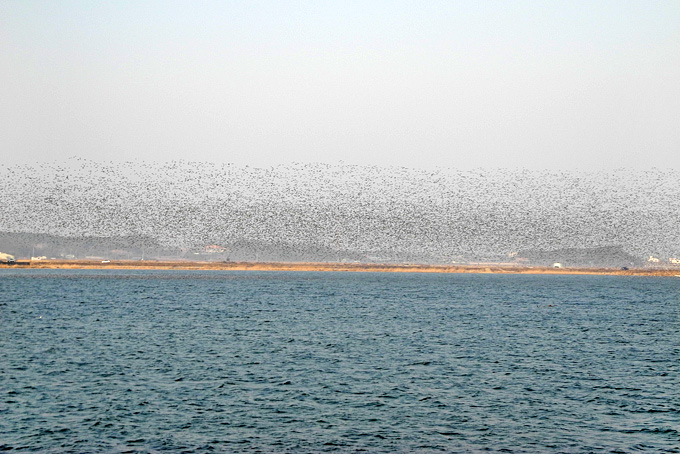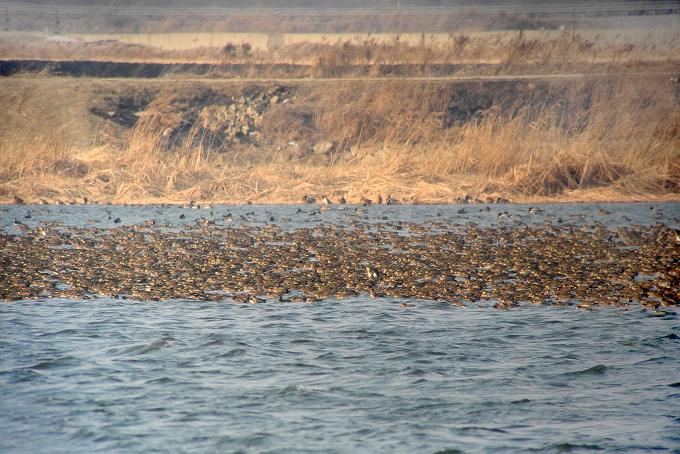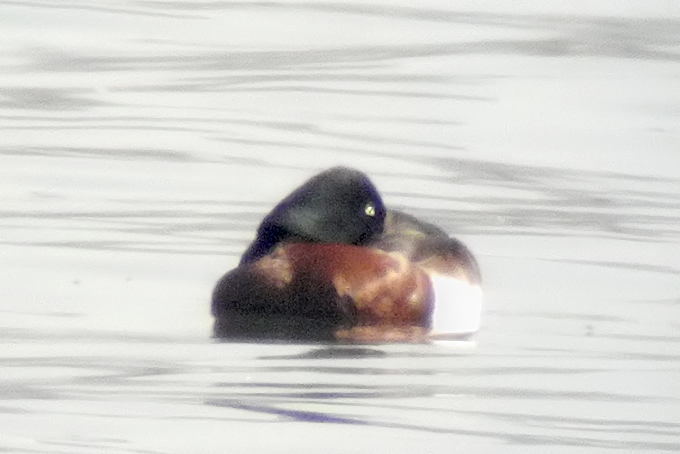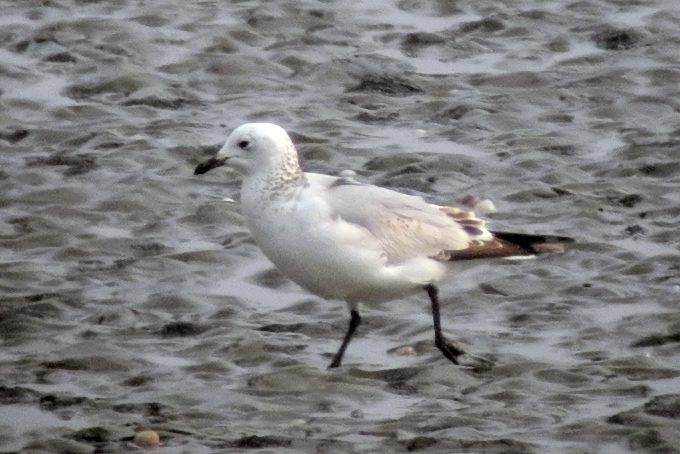Selected Bird News from “Team Shetland” with Nial Moores
A fairly intensive week of birding around the country (as a prelude to a two-week trip by TS to Japan) produced several outstanding highlights. Out of the 150+ species logged, these included good views of Swan Goose, flocks ofBaikal Teal, a single Baer’s Pochard, Scaly-sided Merganser, Solitary Snipe (away from the National Arboretum), Relict Gull, Long-billed Murrelet, Japanese Waxwing, Pallas’s Rosefinch and Ochre-rumped Bunting. On the negative side, it also included observations of oiled birds (most especially Black-tailed Gulls) at several sites along the east and west coasts), probably caused both by chronic oil pollution and recent spills off Busan and Yeosu; sites with restricted access due to Poultry Flu; and yet more construction. Most worrisome, this included a new road being built on the tidal-flat at Yeongjong (near the international airport), the site of the suspended Incheon Tidal Power plants.

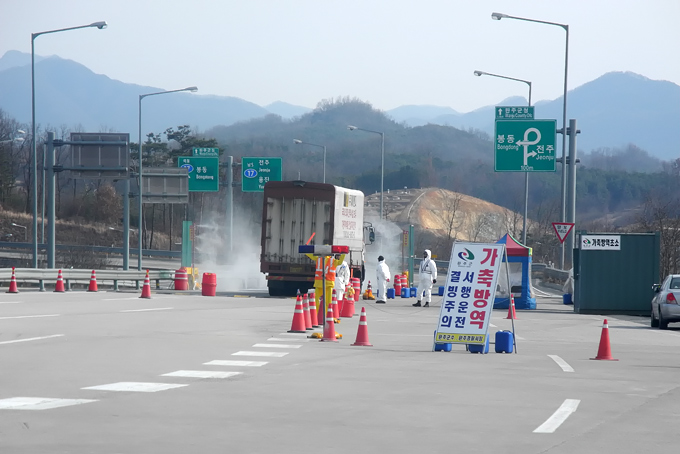
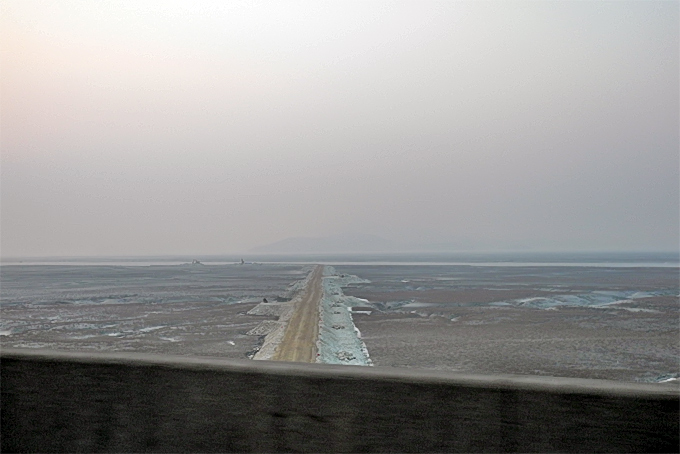
Team Shetland was comprised of Iain Robertson, Richard Schofield, Paul Harvey, Rob Fray (the photographer in the group), Steven Piotrowski and David Okill. Day One (Feb 15th) was spent in Incheon; February 16th, at several sites between Seoul and the East Coast (including the North River); 17th, on the North-east coast (where further heavy snow hampered progress); 18th, on the coast between Uljin and the Guryongpo Peninsula; 19th, at the Nakdong Estuary and then the Geum Estuary; 20th, at Gomso Bay, the Geum Estuary and then Hwaseong; and Day Seven, February 21st, at Hwaseong and in Seoul.
Outstanding highlights (with better images expected to be posted later) included:
- Swan Goose Anser cygnoides. Eighteen at their usual site in the Geum Estuary, watched in perfect light on the 19th.
- Lesser White-fronted Goose Anser erythropus. One adult at the still-closed Junam Reservoirs on 19th (PH only).
- Ruddy Shelduck Tadorna ferruginea. A flock of 290 at Hwaseong on the 21st is a fairly high count for recent years.
- Baikal Teal Anas formosa. One male on the Geum River during the morning of the 20th, was followed by the discovery of a flock of 32,500 on Namyang Lake the same afternoon, with a further ~10,000 or so seen at dusk over Hwaseong the same evening. One was also on Jungnang Stream in Seoul on the 21st.
- Baer’s Pochard Aythya baeri. An adult male, originally found by members of the University Birdwatching Society in late January, and re-found last week, was watched well on the Han River at reasonably close range in good light conditions on the 21st. Although the plumage seemed asymmetrical (with apparently more obvious and extensive white on the left flank than on the right) the bird otherwise looked structurally and plumage-wise spot-on for Baer’s (having an overly large, blue-grey toned bill; a Mallard-green head unsullied with any brown tones; and obvious tiger-striping across part of the otherwise white fore-flanks). The bird was in among a mixed flock of c.4500 aythya, comprised mostly of Tufted Duck and Common Pochard but which also included at least two Greater Scaup. One bird in the same flock that was seen only very briefly was considered by the only observer to see it (PH) to show several characters suggesting male Lesser Scaup.
- Scaly-sided Merganser Mergus squamatus. Eight were on the North River on the 16th, at a site discovered during last month’s survey.
- Oriental Stork Ciconia boyciana. One was seen very briefly at Hwaseong by NM and RF on the 20th, but could not be re-located despite much searching.
- Golden Eagle Aquila chrysaetos. One sub-adult was again present in Odae San National Park on the 16th.
- Steller’s Sea Eagle Haliaeetus pelagicus. One First-winter was at the Nakdong estuary on the 19th.
- Falco sp. A large falcon (perhaps an escaped hybrid?) was at Hwaseong on the 21st. Seen only by NM, it appeared as large or perhaps even larger than female Peregrine, with a more steady flight (originally flying close by low to the ground, it then gained height rapidly and apparently effortlessly through constant wing-beats). Blue-grey above (similar to Northern Goshawk or a paleish adult Peregrine), it lacked either a clean face pattern (being dark-headed without any paler supercilium or “moustache”) or any obvious tail bands, instead showing obvious silvery flashes on the inner primaries of the underwing.
- White-naped Crane Grus vipio. Two at Gomso Bay (perhaps early migrants?) on the 20th were watched well in excellent light (and were considered by some to be most beautiful bird of the trip).
- Pied Avocet Recurvirostra avosetta. Two were with the curlew flock at Hwaseong on the 21st.
- Solitary Snipe Gallinago solitaria. One at Odae San on the 16th, found by PH and seen well by everybody, is an excellent record away from the National Arboretum.
- Eurasian Curlew Numenius arquata. Approximately 3,500 were on the reclamation lake at Hwaseong on the 21st.
- Far Eastern Curlew Numenius madagascariensis. One was seen well at the Geum Estuary on the 19th(indicating overwintering at this site, as two were present there in late December) and one or more probables were with the Eurasian Curlew flock at Hwaseong on the 21st.
- Spotted Redshank Tringa erythropus. One at Hwaseong on the 21st (SP) was either an overwinterer or an early spring migrant.
- Relict Gull Ichthyaetus relictus. None were seen at the Nakdong Estuary, but two First-winters were watched well (feeding on shellfish) at the Geum Estuary on the 20th.
- Long-billed Murrelet Brachyramphus perdix. One was seen from Geojin headland in heavy snow on the 17th(NM only) and another was seen rather more clearly by the whole team off the Guryongpo Peninsula on the 18th.
- Short-eared Owl Asio flammeus. One was at Hwaseong on the 20th (NM only). This species was a fairly common winter visitor a decade ago, but has become increasingly scarce in recent winters.
- Chinese Grey Shrike Lanius sphenocercus. One was seen well at Hwaseong, on 20th and 21st.
- Japanese Waxwing Bombycilla japonica. Three were in the National Arboretum car-park on the 21st.
- Yellow-bellied Tit Periparus venustulus. Several were seen on Yeongjong Island (TS) on the 15th.
- Eurasian Skylark Alauda arvensis. Based on their much more medlodic songs at least two were singing at Hwaseong on the 21st, where several Far Eastern Skylark were also in song.
- Pallas’s Rosefinch Carpodacus roseus. A group of four watched feeding at close range in Daejin harbour on the 17th included one adult male.
- Ochre-rumped Bunting Emberiza yessoensis. Two were in a large mixed flock of Common E. schoeniclusand Pallas’s Reed Buntings E. pallasi at Gomso Bay on the 20th.
- Lapland Longspur Calcarius lapponicus. 400-500 were seen in one flock over-flying rice-fields near to Yeondeok on the 18th.
